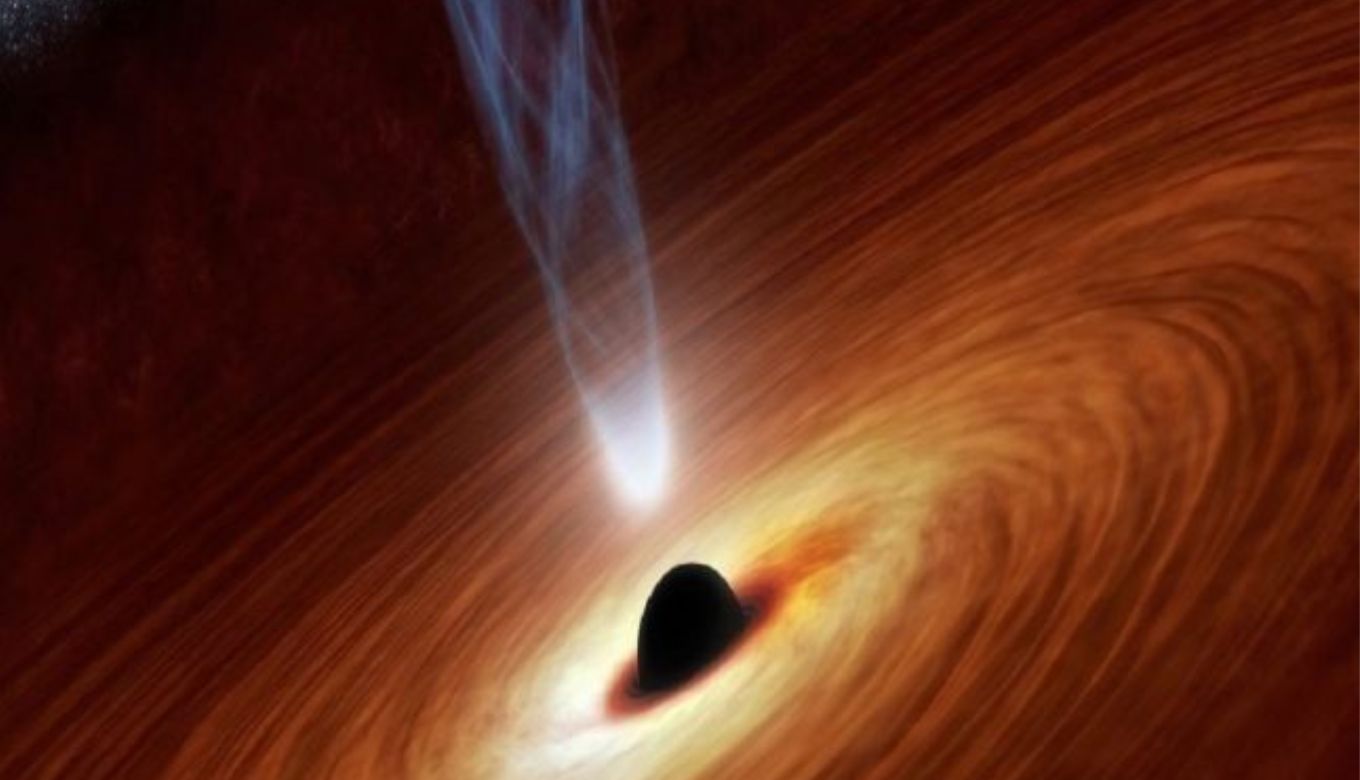Recently radio galaxy that located some 630 million light-years ago named PBC J2333.9-2343 now turned into a blazar.
A radio galaxy emits large radio structures called colossal jets and is now it is aiming toward us, but we don’t have to worry about it.
What is Radio Galaxy?

Image of PBC J2333.9-2343 obtained using Pan-STARRS (Institute of Astronomy at the University of Hawaii. Image Credit: NASA
Before we know anything about Radio Galaxy, we should know about the galaxy.
Galaxies have different shapes and sizes, and their activity level is based on the activity of the supermassive black hole.
Supermassive black holes are located at the core of the galaxy.
The Milky Way for instance is a relatively peaceful galaxy and our supermassive black hole is fairly inactive.
The supermassive black hole actually engulfs the gas and dust from its surrounding space. The material that surrounded the black holes made torus and disc shape structures.
The extreme gravitational and frictional forces at play cause this disk to blaze with light across the entire magnetic spectrum.
The material surrounding the disk drop into a black hole due to intense gravity pull. There are few materials that move outside the black hole and accelerated along the magnetic field line outside the black hole.
These materials are launched into space in a form of colossal jets at the speed of light.
When the black hole becomes inactive, the remaining jets continue to travel through space, spreading out into lobes that continue to emit radio waves.
These are known as giant radio galaxies they can be colossal.
PBCJ2333.9-2343 has such radio lobes, it spans a total distance of 3.9 million light-years.
Also Read: A New Revolution in Space Tech: 3D-Print Batteries in Lunar or Mars Mission
Radio Galaxy has Turned into Blazar

Astrophysicist Lorena Hernandez-Garcia of the Millenium Institute of Astrophysics in Chile said that PBC J2333.9-2343 might now be turned into a blazar.
Garcia explains – “We started to study this galaxy as it showed peculiar properties, Our hypothesis was that the relativistic jet of its supermassive black hole had changed its direction, and to confirm that idea we had to carry out a lot of observations.”
The research team conducted thorough studies collecting observations in radio, infrared, optical, ultraviolet, X-ray, and gamma-ray wavelengths.
They compared their observational data against a large database of blazar and non-blazar galaxies.
The results showed that J2333.9-2343 are reoriented upto 90 degrees and turned into blazar galaxies. It is aiming its jets of radio emission toward us.
It suggests that black holes were knocked out due to collision and merger with another galaxy.
Astrophysicist Garcia said – “very exceptional case of jet reorientation”, transforming J2333.9-2343 and leading to its reclassification from a giant radio galaxy to a blazar.”
Also Read: NASA’s Perseverance Rover Collected First Sample on Mars



